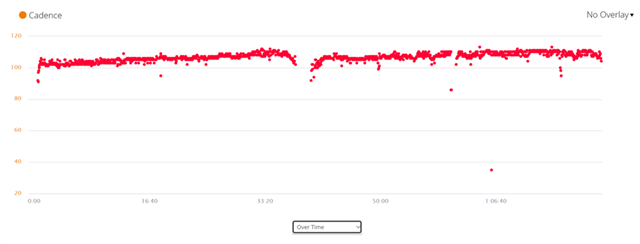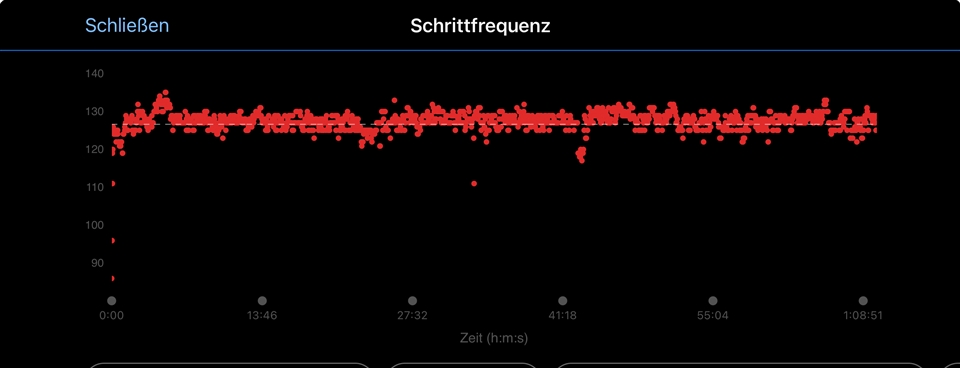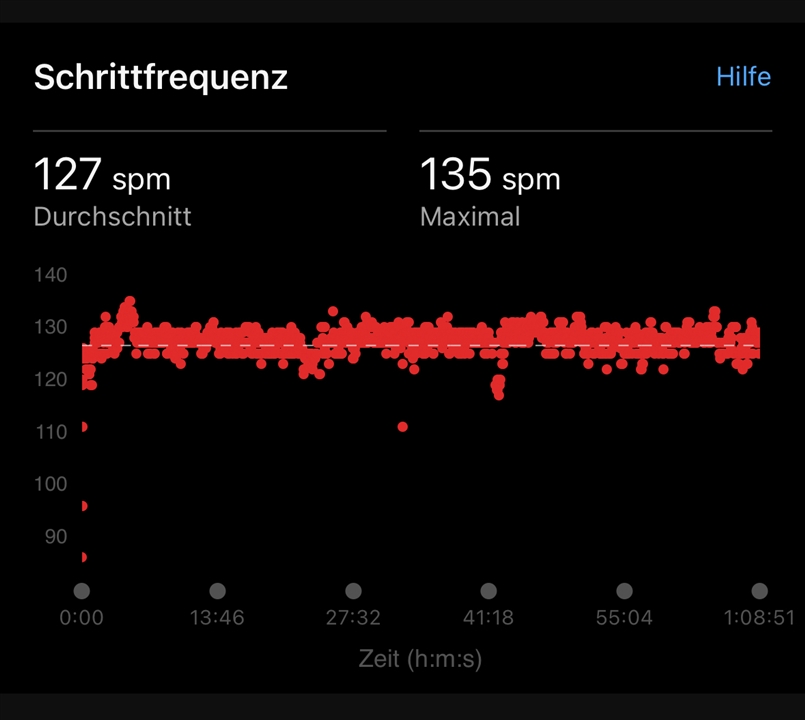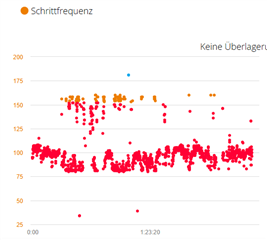I keep noticing that during walking activities, the step rate contains short outliers that correspond to an integer multiple of the actual rate, i.e. usually short moments in which I am supposed to have walked 160 instead of 80 spm.
This should be quite easy to filter out, since a sudden increase to twice the actual rate is rather unlikely with continuous walking with the same speed/pace. It's not like I spontaneously start walking with speedy baby steps. I would have such a stride rate when running, but that would then also have to be reflected in the speed.
The following graph shows a recording of a hike with a steep incline:
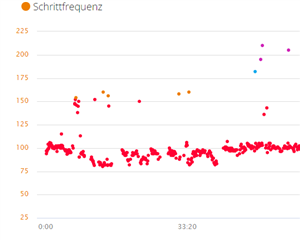
On this recording, it's even crazier.
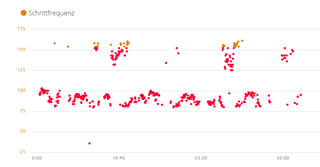
And this is totally nonsense in the beginning:
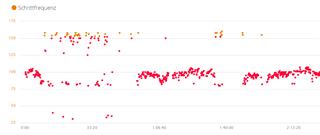
With all these activities, there is no speed increase in the pace, and you can see very well that my "normal" stride frequency when walking/hiking is around 80.


